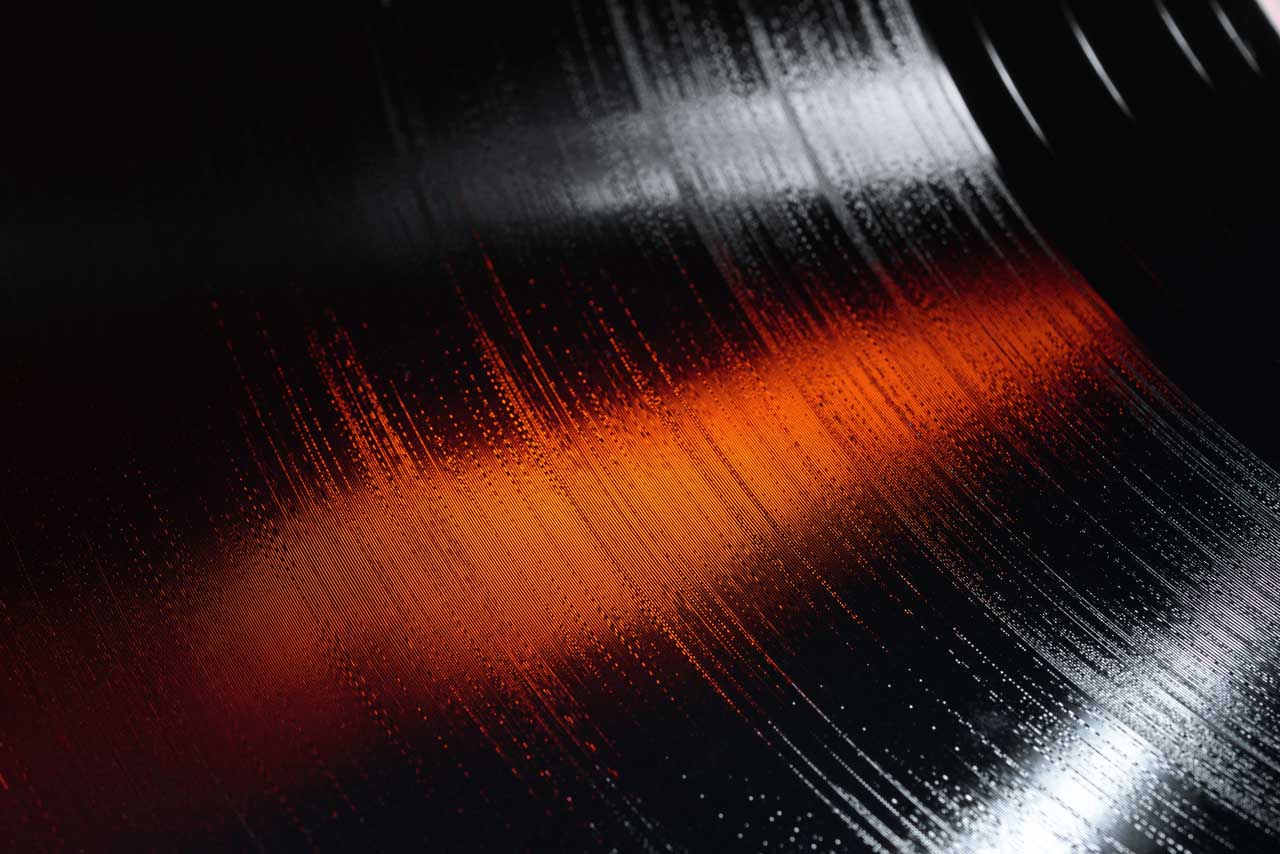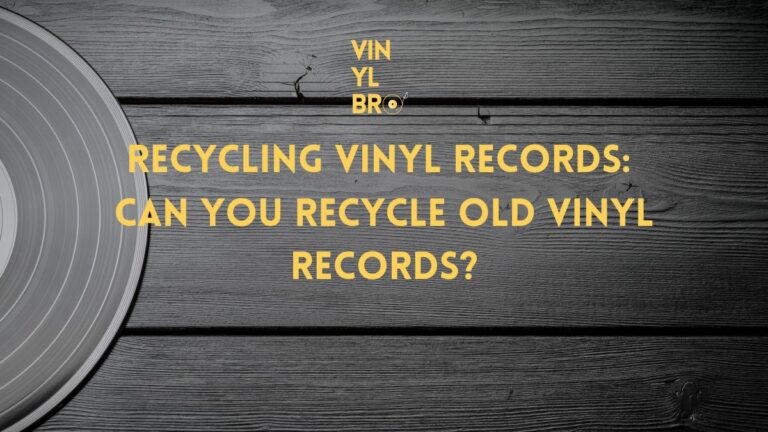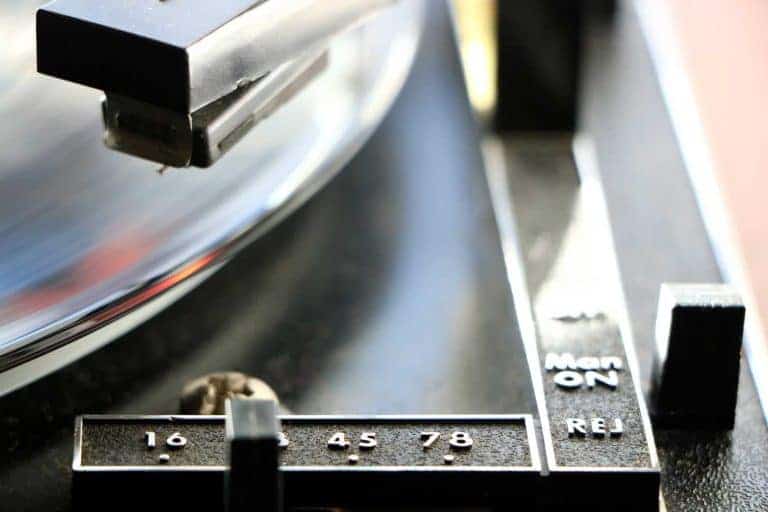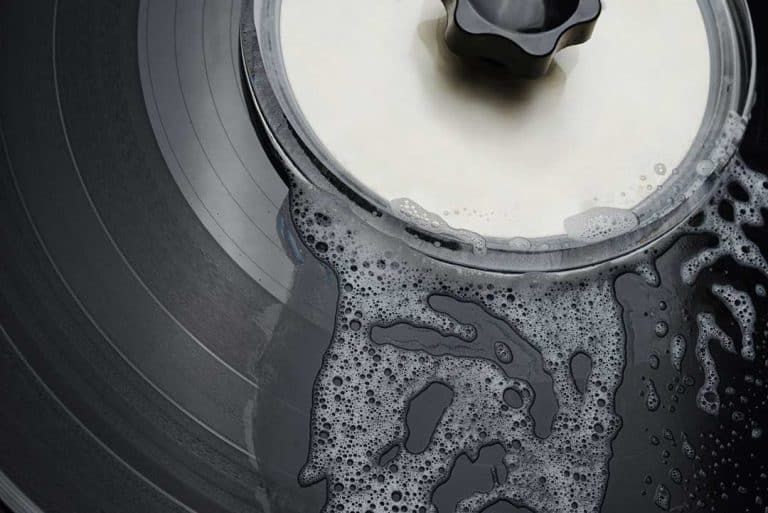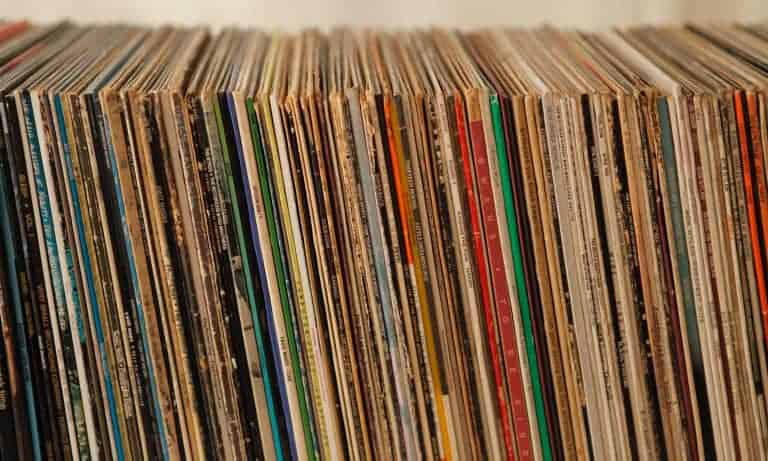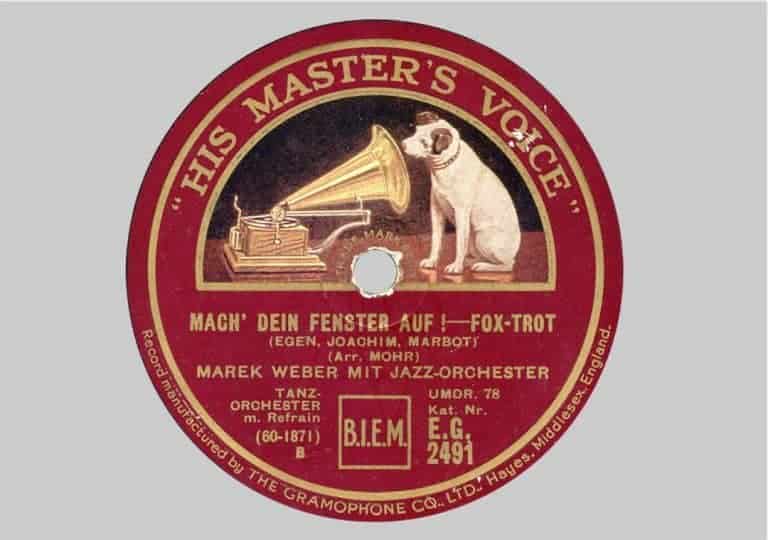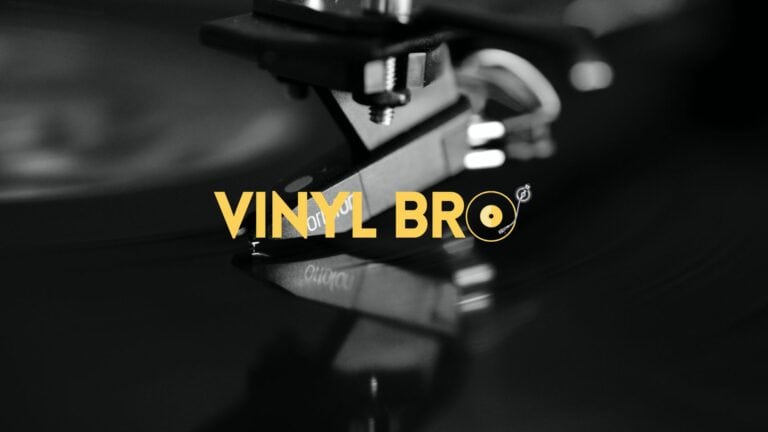Sound of Vinyl: How Do Vinyl Records Work? How Vinyl Makes A Sound
Records are synonymous with music through the ages. It’s no secret that at Vinyl Bro we absolutely love the format and it is our personal favorite format. Obviously, music can be enjoyed through all formats but records are our favorite. Even if you do not prefer vinyl you may be asking yourself how does a vinyl record work?
So, How Do Vinyl Records Work? Sound waves are first recorded and carved into a lacquer round with a lathe. The lacquer is used to produce a master which then stamps vinyl record copies. Sound is then reproduced when the stylus from your turntable runs across the ridges, or grooves, in the vinyl. The stylus then produces an electrical current that is sent to your amplifier. From here your amplifier sends the signal and sound to your speakers.
While this is an oversimplification of the process to give you a quick answer, there are more details into the process that are pretty interesting. Let’s learn a little more about how vinyl records work.
Key Takeaways:
- Vinyl records contain analog sound waves etched into their grooves, with each ridge and valley representing different frequencies. When played, the stylus follows these grooves and vibrates accordingly to reproduce the recorded sounds.
- The stylus generates movements that are converted into electrical signals by the cartridge. These signals are then amplified and sent to speakers, which convert them back into the audible sound you hear.
- Vinyl records are produced through a multi-step process that includes recording, editing, mastering, and pressing. This process involves creating a master lacquer, which is then used to produce a “mother” for pressing the actual vinyl records.
- Proper care of vinyl records and the stylus is essential to maintain sound quality. Dust, debris, and damage to the record or stylus can cause audio issues like pops, cracks, or skips. Regular cleaning and stylus maintenance can prevent these problems.
- The functioning of a vinyl record is closely tied to the record player setup, including the balance of the tonearm and condition of the stylus. Improper setup can lead to skipping and damage to records, so following manufacturer guidelines for maintenance and replacement is crucial for optimal playback.
Remember, the enduring appeal of vinyl records lies not just in their distinct sound quality, but also in the physical and tactile process of playback, which engages listeners in a way digital formats may not.
How Do Vinyl Records Play Music?
Vinyl records play music through a process that involves a unique combination of physics and sound engineering. The process begins with the vinyl record itself, which has been physically etched with grooves. Each groove represents a continuous analog sound wave, with the specific shape of the groove corresponding to the various frequencies of the audio.
When you place the stylus (or needle) of the record player onto the vinyl record and start spinning it, the stylus begins to trace the path of the grooves. The movement of the stylus within these grooves generates vibrations, which are then transmitted to the cartridge at the end of the tonearm.
The cartridge is equipped with a component called a phono cartridge that converts these physical sound vibrations into electrical signals. These electrical signals accurately represent the audio’s waveform and are then sent to the amplifier.
The amplifier boosts these signals into a more substantial form, powerful enough to be sent to the speakers. The speakers then convert these electrical signals back into sound waves that we can hear.
It’s a fascinating process that marries science and artistry in a way that no other music medium does. It’s also one of the reasons why vinyl records have a distinct sound quality that is cherished by music lovers worldwide. This process brings a unique, warm, and dynamic sound quality that’s distinct to the vinyl medium—a testament to the enduring appeal of vinyl records.
So, when you’re wondering how vinyl records play music, remember this intricate journey from groove to speaker. It’s this journey that brings every note to life, creating a timeless listening experience that continues to captivate music lovers around the world.
How Do Vinyl Records Work?
Understanding how your vinyl records work starts in understanding the recording and manufacturing processes. Here is a summarized version of the process of having vinyl records recorded and produced.
How Do You Record On Vinyl?
If you’re looking to get your music pressed onto vinyl, there’s a few things you’ll need to take into account. First and foremost is budget – how much are you willing and able to spend on this project?
Once you’ve got a number in mind, the next step is finding a studio that can accommodate your needs and falls within your budget. You’ll want to ask the studio about their specific process for recording vinyl, as recording a vinyl record can vary from place to place. Generally speaking, however, it should look a lot like this.
There are several phases to the recording of just one song. You need to record your backtrack which is usually your general beat and chord progression. From there you will move into rhythm, harmony, and melody.
Once you have recorded everything you move on to editing and mixing your album. Some albums are mixed differently for vinyl records than they are for digital releases.
Creating A Master Disk
In this process, the artist works with their sound or mastering engineer to create and master a recording for vinyl. Once this mastering is completed the vinyl mastering begins. This is where a master lacquer will be cut using a cutting lathe. Those master lacquers are what are sent over to the pressing plant for manufacturing.
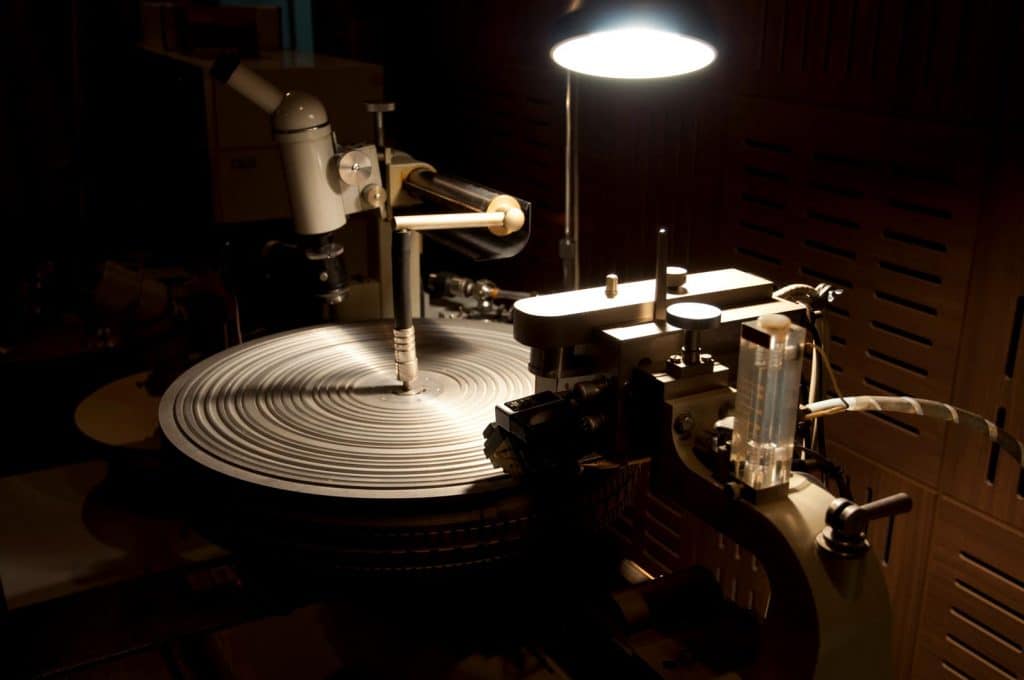
After the master engineer and artist have agreed on the cut to use, the album is moved on to plating.
Creating A Record Mother For Pressing
The mother is a mirror of the lacquer that is used for pressing the final vinyl record. Usually plated with nickel, each mother can be used to make roughly 1,000 records. Many people believe that they hear a difference the farther into the press numbers that they receive.
Pressing And Making Vinyl Records
Once the test pressings have been completed and approved the manufacturer will begin full production. This is done by placing the mother into a hydraulic press. This press is superheated with steam to help melt the vinyl puck as it presses the record into the correct shape. This press perfectly mirrors the grooves in the mother.
Production Finishing Touches
From here the records are inspected and inserted into their sleeves to be sent out. A quality control expert will listen to randomly selected companies to make sure that the press is still pressing the records properly
Now you may be wondering why all this matters in understanding how vinyl works but we are getting there. If you are curious about the process of how records are made we wrote this article that goes into detail about the process.
Understanding How Vinyl Records Work
This process of recording the sound waves through vibration has been around for a very long time. We wrote a related article that goes over the extensive and long history of vinyl records.
The process has not changed very much outside of the fact artists no longer sing into a horn to record. They instead sing and play music onto master tapes where they can be mixed and processed for masters.
Vinyl records have grooves in them that the stylus runs through. These grooves are like a computer file. Each groove contains all the information, or vibrations, the stylus needs to reproduce the sound embedded into them.
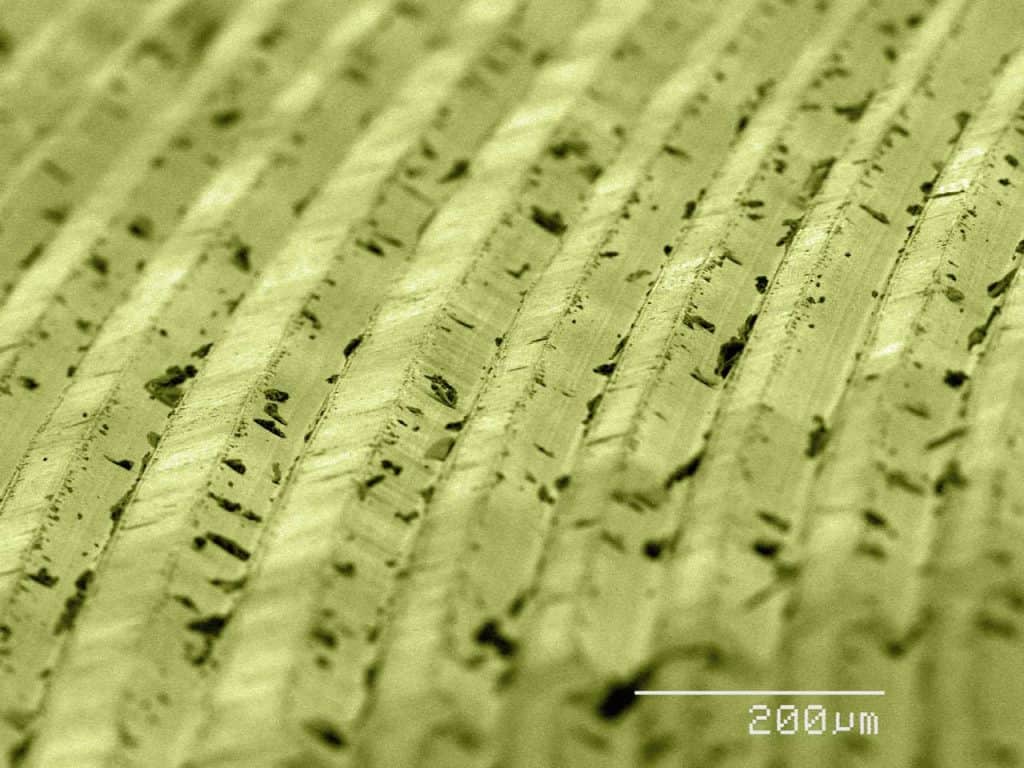
How Do Record Players Work
In order to completely understand how a vinyl record works you have to learn about how record players work. This is important for understanding the whole process.
As the vinyl record spins on your turntable the stylus goes through the records grooves. The stylus then, in computer terms, reads the grooves. These grooves produce vibration, this vibration is sent through the tip of the stylus through the metal arm on the stylus into the cartridge.
These cartridges are electromagnetic devices that the stylus is mounted to. All modern turntables have cartridges that make it easy to change out your stylus when needed.
These contain tiny electrical coils and a magnet inside them. The metal bar of the stylus presses against the magnet and each time it moves, it moves the magnet slightly up and down, generating an electrical signal.
These electrical signals are fed out to your amplifier or preamplifier. Once your amp or preamplifier receives this signal there are a couple of ways it can be handled depending on your setup.
Once the signal goes through the amplifier the signal is louder. This signal now goes to your speakers to project the sound you end up hearing.
This is true even if you have just a plain suitcase turntable or a really nice Rega turntable with a stand-alone preamplifier, amp, and speakers. The signal is received and sent basically the same.
Bringing It All Together
Now that we have all the technical information out of the way it makes it much easier to understand what is going on and how records work. We want to share the below video so you can see exactly what the groove of a record looks like and how the stylus moves in the groove.
As you can see in this video the grooves have tons of ridges, rises, and valleys. While to our eye they just look like rings on the vinyl disc they are actually very intricately cut grooves.
How Do Records Work
Have you ever wondered how your favorite album comes to life? How do those grooves get into the record? Or maybe you’ve been curious about what makes a record skip. In this article, we have explored the basics of how records work.
As the vinyl record spins on the turntable the stylus glides and bounces through every one of those ridges, rises, and valleys in order to then move the magnets inside the cartridge to produce the signal. This visual really helps you understand how vinyl records work.
What Makes Vinyl Sound Worse?
The grooves in vinyl are a precision-made element. This precision is exactly why many of us collectors are so adamant about the condition of a record. Using the video we shared you can now understand if there is a scratch across the top of your vinyl record and how that impacts sound to produce a pop.
Alternatively, if your records are dirty with dust, oil, grime, or dirt you can visually understand how that clogs the groove resulting in poor sound. Airborne environmental contaminants can land on the surface of your vinyl and settle into the tiny spaces between the grooves.
As the stylus glides along the surface to produce the sound you love, it can get caught and be knocked off the groove or skip notes.
The easiest way to remedy this is to clean your vinyl. We always recommend deep cleaning all new records, that includes new and used, before the first play and then having a maintenance cleaner.
For a squeaky deep clean we recommend this cleaning system and for your, before every play maintenance cleaner, we highly recommend this light-duty cleaning spray.
Dust can also cause build-up on your stylus. Make sure to inspect your stylus for any gunk or dust and if you notice a build-up be sure to carefully clean the stylus. We highly recommend grabbing a quality stylus brush.
The best way to prevent this is to deep clean your records and then store your collection using high-quality anti-static and dust preventative sleeves. Often factory sleeves shed paper and dust onto the records, so we highly recommend these sleeves. If they are unavailable this is a great secondary option.
Other Causes Of Record Skipping Resulting In Worse Sound
There are a few causes of record skipping and sound problems and we work an extensive article about them and how to correct or even prevent them. You can read that article here.
Tonearm balance can cause skipping and odd sounds. Tonearms are balanced by a manually adjusted weight system. When the balance is off it can cause slipping, the most minor effect of which is skipping or going off track.
A more serious effect could be scratching or damaging your record. The tonearm itself is where the cartridge is attached to your turntable. This is where the stylus sides the signal through the arm to the output channels.
It may be time to replace your stylus. Examine it for bends, wear, or other damage. Over time your stylus will wear out or become dull.
We recommend following your record player’s manufacturing guidelines for maintenance. If you’ve lost yours, a general guide is to change your stylus after 1,000 hours of playtime.
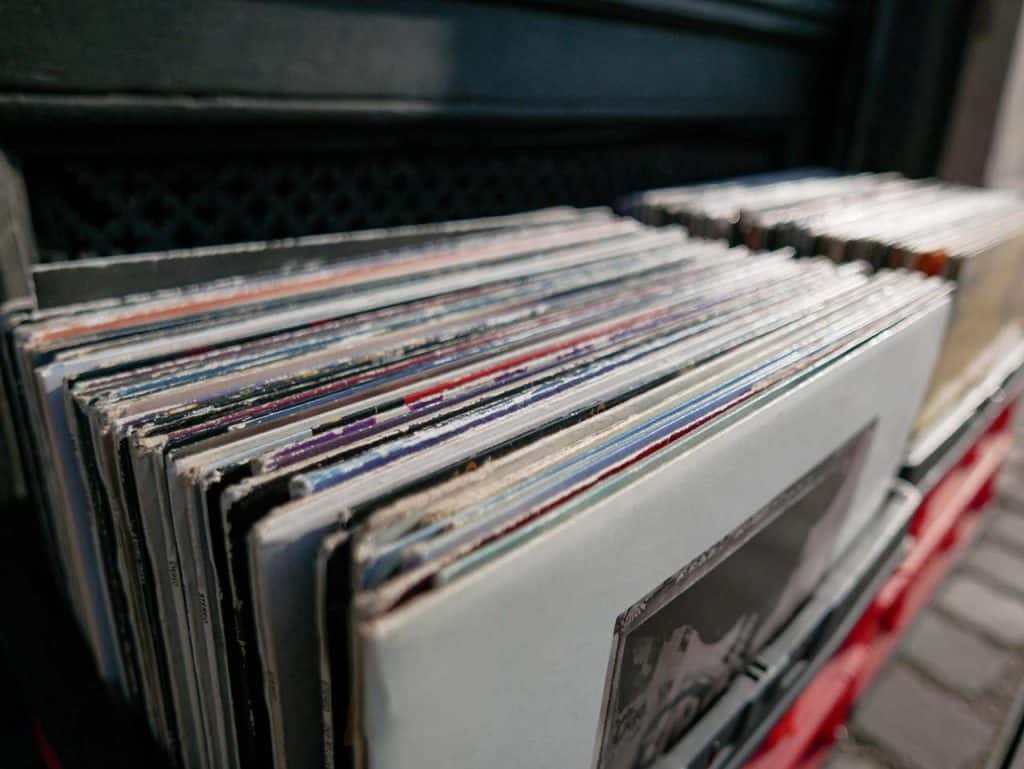
Keeping Your Collection In Great Shape
Vinyl records are a popular way to listen to music, but they can be easily damaged. The average vinyl record can last up to a thousand plays before it starts to skip. However, some records, especially those that have been played a lot, can start to skip on certain parts of the record. This is caused by a buildup of debris and particles that accumulate on the record’s inner grooves and causes the record to skip. If this happens, it is important to clean the record and make sure to restore it to its original condition.
Detailed and gentle cleaning with proper techniques will resolve most minor issues that cause vinyl skipping, such as debris, grime, and fine particles. We would recommend investing in a deep cleaning system and a general maintenance kit for daily use before play. By keeping your collection clean you give it the best chance to work properly.
How Do Records Work? A Conclusion
To wrap it up sound waves are first recorded and carved into a lacquer round with a lathe. The lacquer is used to produce a master which then stamps vinyl record copies. Sound is then reproduced when the stylus from your turntable runs across the ridges in the vinyl record. The stylus then produces an electrical current that is sent to your amplifier. From here your amplifier sends the signal and sound to your speakers.
We hope you enjoyed learning about how vinyl records work, diagnosing common sound problems, and how to keep your collection in top condition. With this knowledge, you can better visualize and understand how records work and why the sound degrades when there is a problem with the vinyl or turntable.

